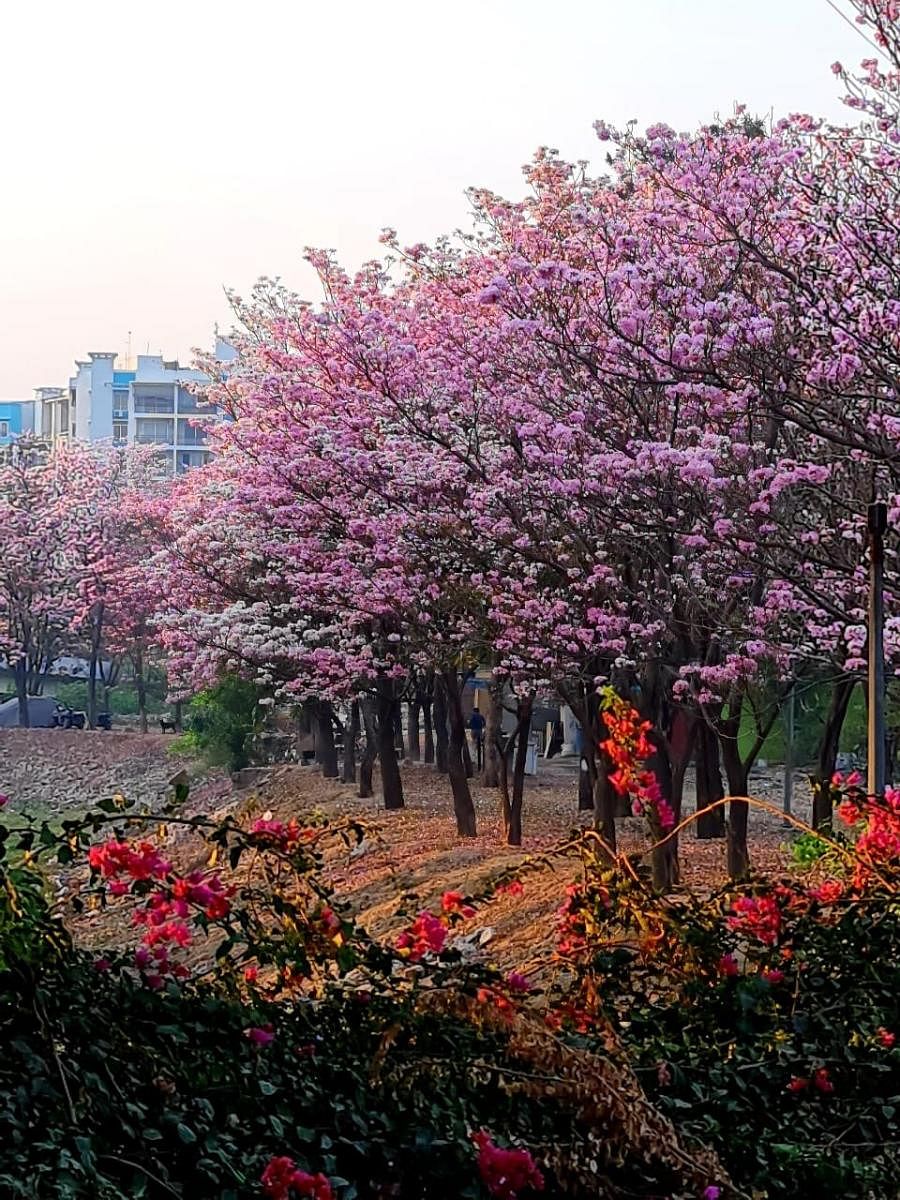
It’s that time of the year again, the city’s streets are lined with our own version of blooming Cherry Blossom — the Tabebuia Rosea.
Here are a few facts about these almost leafless trees that explode with delicate pink and white flowers.
The tree is native to south America and is colloquially known as the ‘pink trumpet’ or ‘pink lapacho’ trees; its two close cousins, the Tabebuia avellanedae and Tabebuia aurea also burst into bloom around early spring in Bengaluru.
It grows rapidly and can attain a height of 30 feet in the first three years of life. It has an average lifespan of 50 years. Following the flowering, seedpods form.
The seedpods ripen over the year and the feathery seeds are dispersed all over the ground below the tree.
The British introduced the trees in the city in the 1900s, as they had done in their other colonies across the world as part of a stylised colonial botanical aesthetic, which valued flashy, ornamental exotic species like this one, over the native ones.
SG Neginhal, widely regarded as the IFS officer who turned Bengaluru into a garden city was the one who planted these trees along the roads in the 1980’s.
These trees are present in other cities like Pune, Delhi, Mangaluru and parts of Mumbai as well, but they bloom best in Bengaluru, as the climate is ideal.